This week, the Hub’s Nuclear Robotics Laboratory Technician Erin Holland & the Interface Analysis Centre's PhD student Stacy Moore are on a field trip mapping some of the more interesting natural radiation sites in Cornwall.
There is background radiation everywhere, but Cornwall is on average more radioactive than most other parts of the British Isles because it is built largely on granite, an igneous rock which produces radon more rapidly than most other rock types. The map below shows the higher radon levels in Cornwall relative to the rest of the country indicated by the darker colours.

Image credit: Public Health England
Radon Levels in Cornwall
Radon is a radioactive gas that is odourless and colourless, so it is necessary to map areas of interest in order to monitor and track radiation levels. The risk of suffering ill effects from radiation scales with exposure, so very small levels – such as those found by walking on top of a granite cliff, or sunbathing for a few hours– are not considered overly risky to humans, but they can be picked up by a radiation detector.
Using the results from these sites, which require safety equipment no more advanced than sturdy boots, can help us test out equipment and mapping techniques that we can use in other, more dangerous areas; for example the clean-up operation in the Fukushima Daiichi nuclear power plant), which would require much more stringent radiation exposure prevention equipment.
Locations and Techniques
Erin & Stacy have found some interesting results around old tin mines and the granite coast. Lots of the mapping was done by monitoring a radiation counter while driving around Cornwall, stopping to do a walking survey at points of interest, and some of it was done by going to known hotspots and taking transects.
For initial mapping such as this, the equipment needed is very simple – a radiation counter in a backpack is all that is needed. It automatically records the GPS coordinates of every data point, so other groups could go back and walk the exact same route a second time to confirm results and monitor any changes.
Our Engineering Lab Tech Erin & @UoBrisIAC PhD Stacy are in sunny #Cornwall this week radiation mapping - bare patches of granite are proving to be interesting hotspots pic.twitter.com/psC6LnMzQW
— South West Nuclear Hub (@SWNuclearHub) December 19, 2017
Although most of the results won’t be analysed until they get back to the lab, the pair managed to take some great shots of Cornish landscapes. This, in combination with the GPS coordinates, will also help any future field surveyors find the exact spot they went to.

Will be visiting Cornwall in May, have just ordered a gieger counter & would appriciate your advice on where to look for radio active rocks as well as South terras and what is maximum level for safety.
Thank you
Peter